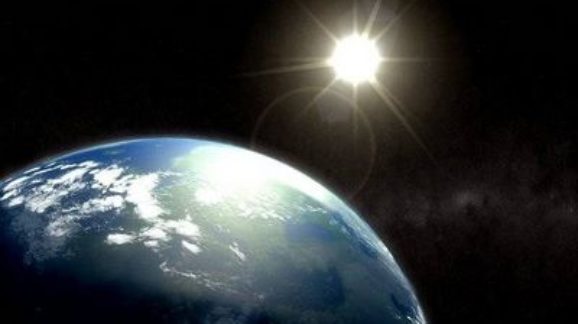Preparing for Al Gore’s ‘Inconvenient Sequel’

 Al Gore has made his way back into the political spotlight with his new film An Inconvenient Sequel: Truth to Power. This documentary follows up on the claims of the 2006 original, An Inconvenient Truth. Before you watch the newest Gore film, here is a reminder of how factually troubled the first film was.
Al Gore has made his way back into the political spotlight with his new film An Inconvenient Sequel: Truth to Power. This documentary follows up on the claims of the 2006 original, An Inconvenient Truth. Before you watch the newest Gore film, here is a reminder of how factually troubled the first film was.
In between political jabs at the 2000 election and emotionally stirring anecdotes, Gore argues that Earth’s climate as a whole is in danger, that humans are causing the dangerous climate change, and that the solution is to dramatically cut emissions of carbon dioxide. Gore portrays these points by showing graphs of data, alarming photos of melting ice, weather catastrophes, and other startling images to a captive audience. Throughout the lecture-style presentation there are cuts of Gore in meetings and long shots of him pensively staring off into the distance. The documentary, like many other documentaries, is dramatic and emotionally moving, but the “facts” of the film have come under fire as over-inflated.
A UK judge actually ruled that the movie could not be shown in schools without first presenting a viewing guide to “prevent political indoctrination.” Scientists also debated the topics of the film in a series of peer-reviewed documents, none of which wholly supported the scientific claims of the documentary aside from the basic effects of greenhouse gases on the environment. Most of the scientific papers claim there are significant “exaggerations” which undermined the scientific message of the film. The most contentious exaggerations were those that linked individual events like Hurricane Katrina to global warming. CEI Senior Fellow Marlo Lewis published a book-length commentary on the film’s inaccuracies (shorter version here). For example, Gore claimed that polar bears are drowning because of a lack of sea ice, a claim based on a single report of four polar bear drowning in a one-month period following a storm. More recent research has found polar bear populations actually rising.
A decade has passed and the film’s catastrophic claims have not come true. A number of climate change advocates have published weak rebuttals claiming that Al Gore was partly correct in his predictions about the changes in the last decade, but other sources reiterate that the documentary was an exaggeration and contains many failed predictions. There is no conclusive evidence that the Earth is becoming unlivable nor are lives and property are at risk on a global scale. Like in the film, climate advocates continue to point to local anomalies and single events as smoking gun evidence for dangerous climate change.
Gore went on to be awarded a Nobel Peace Prize and receive a number of awards for the film, and Gore continues to make money from speaking at events. Gore has also been criticized for having a large carbon footprint from traveling in private planes and living a lavish and energy-intensive lifestyle.
Gore also continues to mislead the public into thinking we are on the brink of catastrophe. There is no reason to believe that the newest documentary will be any less deceptive as it aims to defend Gore’s first documentary and further establish the alarmist myths of the global climate scare.